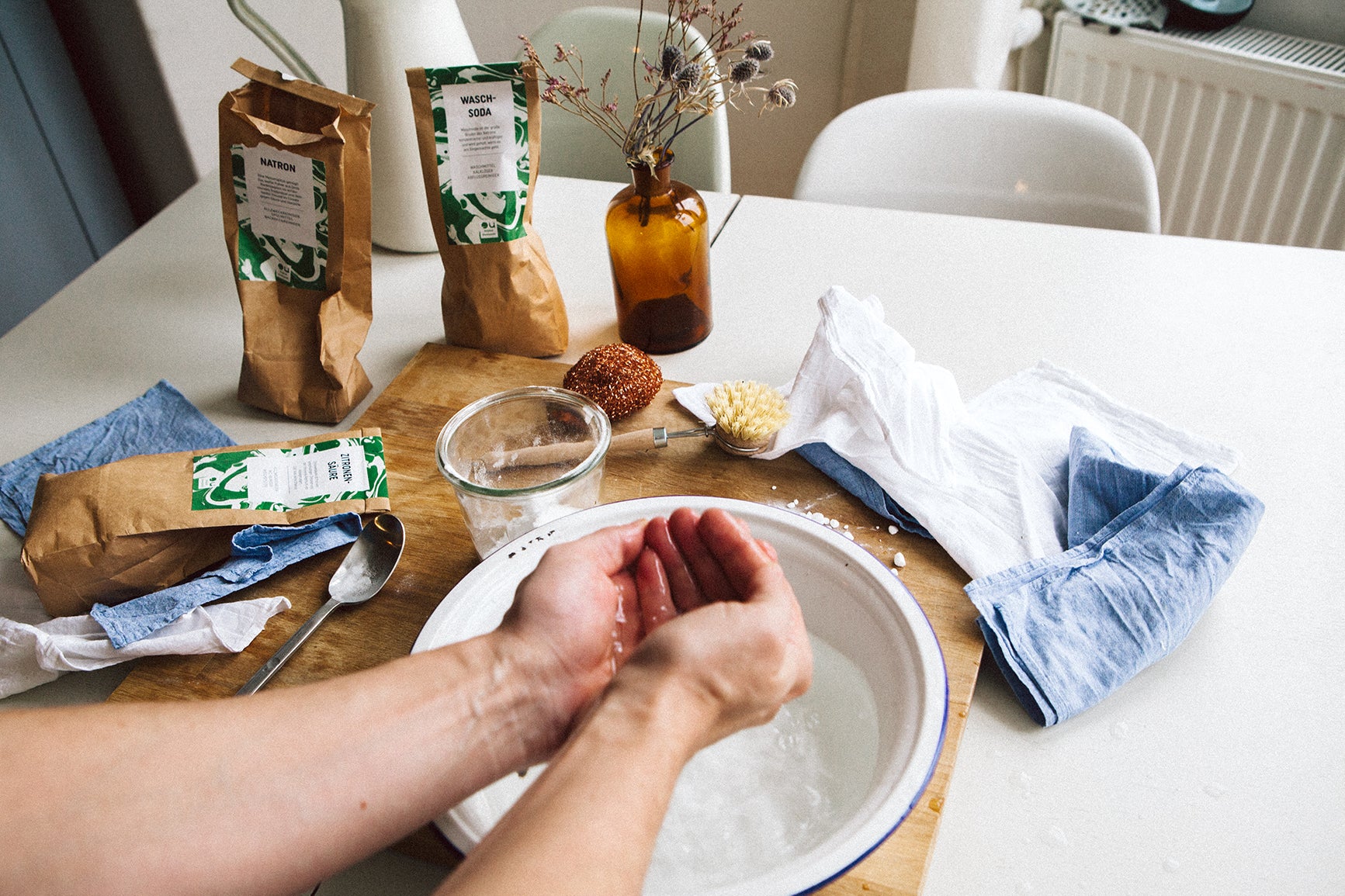
The Sustainable Laundry Guide
Save CO2 when washing? Is that even possible? And honestly, does it really make that much of a difference?
Do it.
0.6 kg CO₂ washed at 30°C, air dried
0.7 kg CO₂ washed at 40°C, air dried
2.4 kg CO₂ washed at 40°C, tumble dried
3.3 kg CO₂ washed at 60°C, dried in a tumble dryer
Almost 40% of a garment's ecological footprint comes from the "use phase" - that is, washing and drying. With water and electricity consumption, the chemicals in household detergents and the distribution of microplastics, washing has a larger footprint than you might think.
With our washing guide you save CO2 and protect the environment.
frequency
The average household washes 400 loads of laundry per year. That equates to more than one load per day.
Doing less laundry saves water, energy and protects your clothes. Plus, fewer loads of laundry means fewer microfibers ending up in our oceans (more on that later).
So before clothes go on the laundry pile, ask yourself: Do they really need to be washed? Are they stained? Do they smell even after being aired out?
Tip : Wash less and always fill the washing machine!
temperature
A typical washing machine uses 90% of its energy to heat the water and only 10% to run the motor. Reduce your environmental impact and wash with cold water. You save energy, which also saves money.
Cold water also prevents the fibers from shrinking and fading, extending the life of the clothes.
Tip : Lower the temperature. The laundry will also be clean at 30 or 40 degrees.
wash cycle
Pre-washing is no longer necessary with today's detergents. It is better to treat stains in advance with soap or stain spray. In addition, the quick wash program is often sufficient. It is best to try to see if you can shorten the wash cycle. If you reduce the spin speed, this will protect the clothes and the washing machine. This will make them last longer. In addition, a high spin speed uses more energy.
Tip : Do not prewash and select a low spin speed.
dryer
Use the dryer as little as possible. Dryers are energy guzzlers. In the home, they are the second most energy-consuming appliance after the refrigerator. In a household that uses the dryer 200 times a year, switching to air drying can save almost half a ton of CO2.
To ensure that your laundry is still nice and soft, we recommend apple cider vinegar. Simply add 1 tablespoon of apple cider vinegar to the fabric softener compartment.
Tip : Do not use a dryer.
Synthetic fabrics
It's worth checking your clothes before washing to eliminate any synthetic materials. Look for: polyester, viscose and elastane.
Every time synthetic clothing is washed, tiny microscopic plastic particles break off and end up in our wastewater. Since water treatment plants are unable to filter them, they often end up directly in the sea.
Ideally, these materials are avoided when purchasing. But we know that this is not so easy. That is why we recommend using a Guppyfriend . These help to catch fibers that come off during washing.
This is how the wash bag works:
-
Put all textiles with synthetic components in the washing bag. The bag should only be filled to about 80%.
-
Close the bag and wash the laundry as usual.
-
Remove the wet textiles from the bag and hang them up to dry.
-
Remove the microfibers from the Guppyfriend and dispose of them in the residual waste
Tip : Sort out synthetic fabrics and use a washing bag like Guppyfriend.
detergent
If the product contains environmentally harmful substances, these will be released directly into the environment. Fortunately, this can now be avoided quite easily. Use eco-friendly detergent, eco-friendly washing tablets or make your own detergent.
You can get eco-friendly detergent in the unpackaged store. There you can also fill it yourself and save on packaging once again.
You can find eco-washing tabs here.
Do It Yourself: Detergent powder for normal laundry
3 cups of grated soap
2 cups of soda
2 cups of baking soda
Instructions: Mix everything together and add essential oils if needed. For white laundry, add a cup of citric acid for a bleaching effect.
Tip : Use eco-friendly detergent or make your own detergent with washing tabs or with soap, soda and baking soda.



Leave a comment
This site is protected by hCaptcha and the hCaptcha Privacy Policy and Terms of Service apply.